DnD Artificer 5e class guide
An Artificer 5e is the inventor or engineer of the Dungeons and Dragons universe, able to craft the perfect magic item for any situation. Their versatility make them appealing to experienced players who love to crunch the numbers of a character build, and their unique tinkerer gimmick makes them a draw for any player who loves tools, robots, guns, and the like. This DnD Artificer class guide covers everything you need to know to get crafting.
For a broader overview of all 14 5e class options, our main DnD classes guide offers a full tour. To make character creation simple, we also recommend you check out our guides to DnD races and DnD 2024 backgrounds. For now, though, let's talk Artificer.

Level: One
| Hit dice | d8 |
| Primary ability | Intelligence |
With average HP, supported by their proficiency in medium DnD armor and DnD shields, Artificers have moderate staying power, equivalent to a Cleric 5e character.
Your subclass can improve this further, such as by granting you access to heavy armor. Unlike a Cleric, however, you can also enchant your own magic DnD weapons and armor, and cast the Shield spell, allowing you to dance the steel tango with frontline Fighter 5e characters.
Intelligence is the key attribute for an Artificer. It affects your spells, and the two subclasses tailored for martial builds let you use INT for weapon attacks. However, Strength and Dexterity still come in handy for making regular attacks, so you could equally focus on one of these as your primary DnD stat.
After selecting a primary ability score, you should bulk up your Artificer's Constitution (decent armor proficiencies can only take you so far). Characters that don't use DEX as their primary stat will still often want to increase it to 14, because this is the most that you can take advantage of while using your medium armor proficiency.
Wisdom is easy to drop with most Artificer builds; characters with endless supplies of explosives are much more fun to play when they've also got the temperament and wisdom of a squirrel on speed.

Level: One
| Armor proficiency | Light, Medium, Shields |
| Weapon proficiency | Simple, Firearms |
| Tool proficiency | Thieves, Tinkers, Any Artisan |
| Saving throws | Intelligence and Constitution |
| Skills | Two of Arcana, History, Investigation, Medicine, Nature, Perception and Sleight of Hand |
Our advice: More so than any other class, Artificers get a lot of tool proficiencies. You start with three and can add another two or three from your class and race choices.
As you develop through the class, you'll get an extra tool proficiency from your subclass, before doubling your proficiency bonus for all tools. It's worth taking a minute to consider some of your options.
In 5e, all vehicles are considered tools. An Artificer can be better at driving a wagon, sailing a boat, or piloting an airship than most other characters. If you know that you're going to be playing a pirate-themed campaign, this could be the time to roll up a scourge of the high seas!
Thieves' tools are built into the class and offer a lot of utility in disarming traps and picking locks. An often overlooked aspect of thieves' tools is that they allow you to use them to set traps. Combine that with your magical tinkering feature to enchant traps, making them hum the Thranish national anthem until someone comes to investigate it.
The poison kit is often used to generate a bit of extra oomph in tough combat situations. The rules governing its use are vague, but most DMs will allow you to extract a dose or two of poison from anything that tried to poison you. Having a few poison-tipped daggers to hand can be handy in a tight spot.
Finally, there are also some options for roleplaying your way into, or out of, trouble. Dice and cards are considered tools, so in the right setting, you can extract a round of drinks at the bar. Musical instruments are also tools, so while Artificers tend not to be master manipulators you can be a world-class performer, or at least justify an aid action for whatever the party Bard 5e is up to this time.
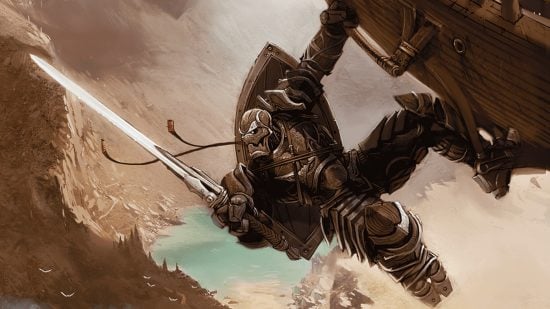
Level: One
Magical Tinkering 5e lets you make as many permanent DnD magic items as you want, just as long as you don't mind the old ones fading away as soon as you construct a new one or picking from an extremely limited pool of powers. The powers your magic item can have include:
Our advice: More often than not, these are a way to flavor your character's creations and look cool doing mundane things. But every now and again, you'll solve a problem with one.
Level: One
Artificers start out knowing two cantrips and two-first level spells. They use their tools as a spellcasting focus, and their number of known spells scales as they level up. Artificers are what the D&D community call a 'half-caster' - a class that uses spells but also focuses on other core class abilities.
Our advice: Spellcasting starts out as important, but that importance fades as you level. At first level, you'll have two first-level spells and be the arcane equal of the party Wizard 5e. By 20th level, you'll only have access to fifth-level spells, which will be overshadowed by the Wishes and Meteor Swarms the rest of the party are throwing about.

Level: Two
Infuse Item 5e is your core class feature. It allows you to create a selection of magic items and change them every long rest. You start out knowing four different infusions, and you can create two infused items that can exist at the same time. Both the number of infusions you know and the number you can produce at one time grow as you level up.
There are three popular schools of thought on how to use this feature, and they're all valid:
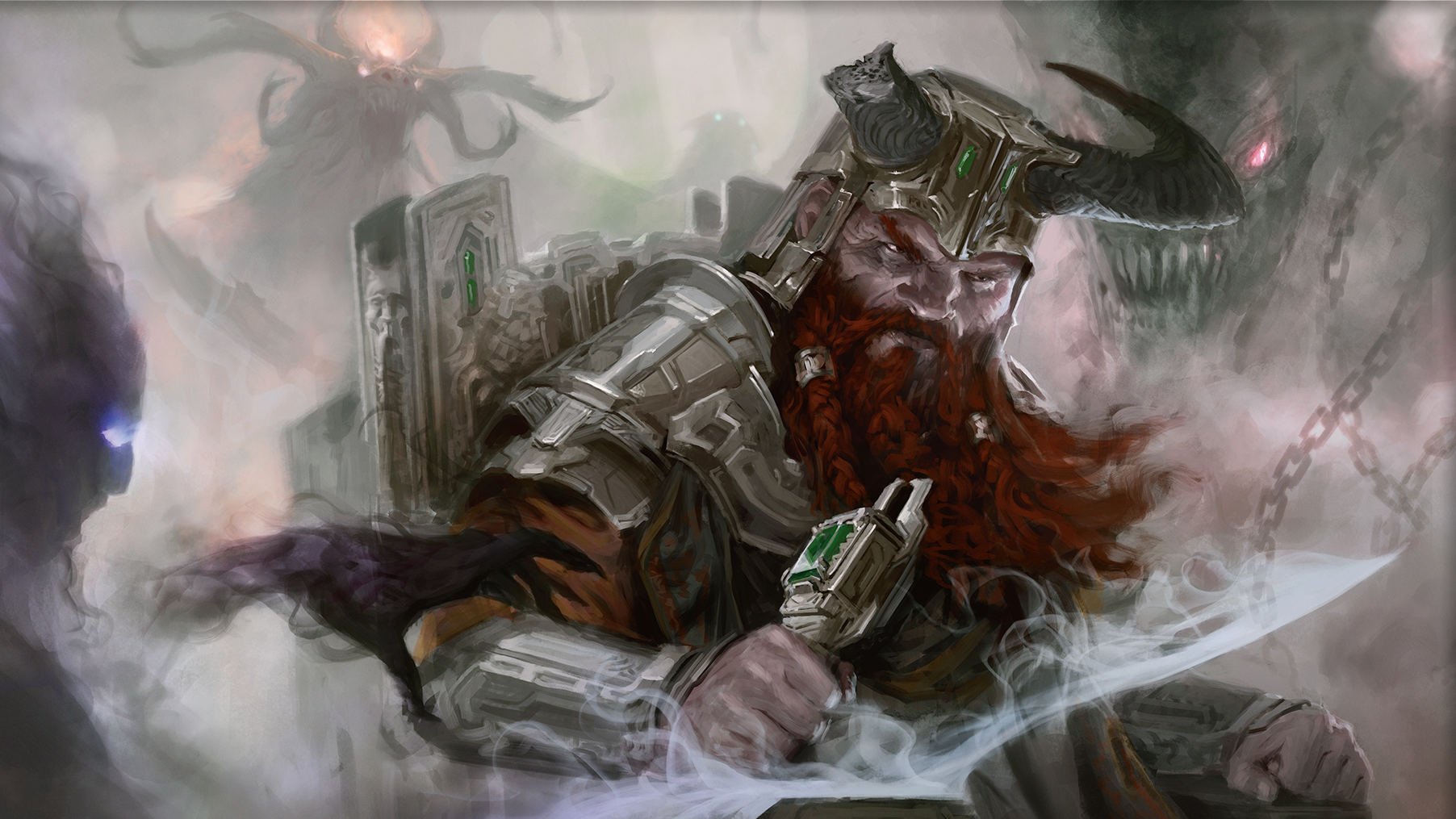
When you first gain this feature, you choose four items that you can build. Though you may only have two built and working at once. Each time the feature upgrades at levels six, ten, 14, and 18, you'll add another two items to your construction roster and can make an extra one each day. With such a limited number available, we thought we'd highlight some standout choices:
Returning Weapon
This gives a weapon +1 to hit and damage and makes it return to your hand when thrown. Since throwing weapons are a rare chance to add STR to a ranged attack roll they can be useful, but most warriors are reluctant to throw their only weapon away or to figure out how to get through doors while carrying 50 spears.
Alchemy Jug
An Alchemy Jug allows you to concoct a range of useful liquids. Acid is the alchemist's skeleton key. Half an ounce of poison before a battle can tilt things in your favor. Two gallons of mayonnaise can… well when all you've got is two gallons of mayonnaise everything looks like an overly dry sandwich.
Mind Sharpener
This allows a caster to succeed at four concentration checks where they'd otherwise fail. This is tremendous when your favorite primary caster has just hit their new spellcasting level and wants to make sure that their top-level spell gets to last all combat. Cut a deal with someone who knows Polymorph, and they can keep you in dinosaur form for the full hour.
Repulsion Shield
Repulsion Shield requires you to hit sixth level but gives the wielder the option to push their attacker as a reaction. Not every class has a way to use reactions helpfully, so it's essentially an extra action a few times a day. Granted, pushing someone 15 feet doesn't always do something useful, but when it does, it tends to be spectacular.

Gauntlets of Ogre Power
When you hit tenth level you can make Gauntlets of Ogre Power, making the wearer's STR equal to 19. It doesn't matter what it was before, it's 19 now. If you're an Intelligence-based Artificer, you can go from 'doesn't know which end of the spear is the pointy one' to 'a terror in close combat' at a stroke. At higher levels, there's an upgrade that takes your STR up to 21.
Cloak of the Bat
At 14th level, you gain access to the excellent Cloak of the Bat. Advantage on all stealth checks is tremendous if you're a DEX-based Artificer, and turning into a bat has brilliant spying and scouting potential.
The real joy is the infinite 40-feet fly speed which can be used to get out of, and into, a host of trouble. Just remember that the flight stops working immediately if someone shines a bright light on you, even if you're in mid-air.
Horn of Blasting
At fourteenth level, you also have the rare opportunity to enjoy the Horn of Blasting, an item that has a 20% chance to explode every time it's used. Usually, it's best to sell or trade, but you're an Artificer, so if yours explodes you can just make another one. A 30-foot cone of 5d6 damage that can be used by anyone is nothing to sniff at, but think carefully about giving it to a familiar since it'll likely take the poor thing to death saves if it explodes.
Ring of Protection
We also feel obliged to point out that the Ring of Protection offers a helpful +1 to AC and saves while stacking with other buffs. It's useful to most of the party, but is skewed more towards 'mundane efficiency' than 'flashy items that might fail spectacularly at critical moments'.
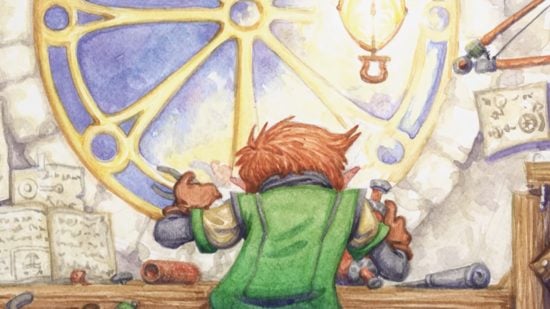
Level: Three
The Right Tool for the Job has a cool name, but it's a contender for the single most underwhelming power in D&D. Are you ready? It allows you to acquire a set of artisan's tools so that you can use your tool proficiencies.
Our advice: The tools aren't any better than the ones you could've bought for a trivial amount of gold, so it is useless if your equipment hasn't been taken away. However, it only works if you have a different set of tools to hand, so it's also useless if your equipment has been taken away. Also, creating the tool takes an hour.
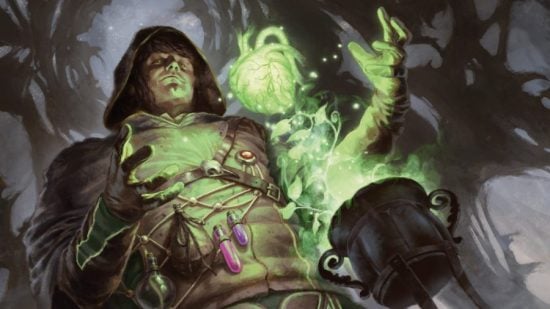
Artificer subclasses are called 'Specialists'. More so than any other class, your choice of subclass will greatly determine your role in the party. Whether you pick one that enhances your spellcasting or melee abilities will have a considerable impact on how the class feels to play.
Fiction is full of famous Artificers from Hephaestus to Frankenstein, but they have radically different approaches to their creation. An Artificer's choice of Specialist lets you define whether you're adept at creating terrifying biological experiments, firearms built from scraps, or even stompy mech suits.
The Alchemist 5e is all about bubbling potions. Their bonus spells grant them access to the ever-useful Healing Word, allowing them to get dying allies back into the fight without taking their whole turn to do it. At high levels they gain Raise Dead, putting them into the valuable category of 'If this one survives, we all survive'.
Experimental Elixir gives an extra potion (or more at higher levels and/or by spending spell slots). Some of these can be really helpful, such as adding a d4 bonus to every roll for a minute. Sadly, you don't get to choose which potions you're given, and must roll randomly on a d6 table.
Alchemical Savant is the bread and butter of the class, adding INT to your healing rolls and damage rolls for acid, fire, necrotic, and poison damage. There's a little flexibility here. A lot of subclasses for spellcasting classes buff either damage or healing, but rarely both, so although you may not be a primary caster, your DnD cantrips will benefit nicely.
The higher-level abilities aim to increase your healing powers, but they're not spectacular. Several bonus castings of Lesser Restoration - gained six levels after the Cleric added it to their list - and one bonus casting of Heal are a welcome addition to your abilities, but still leave you overshadowed in your specialist area.
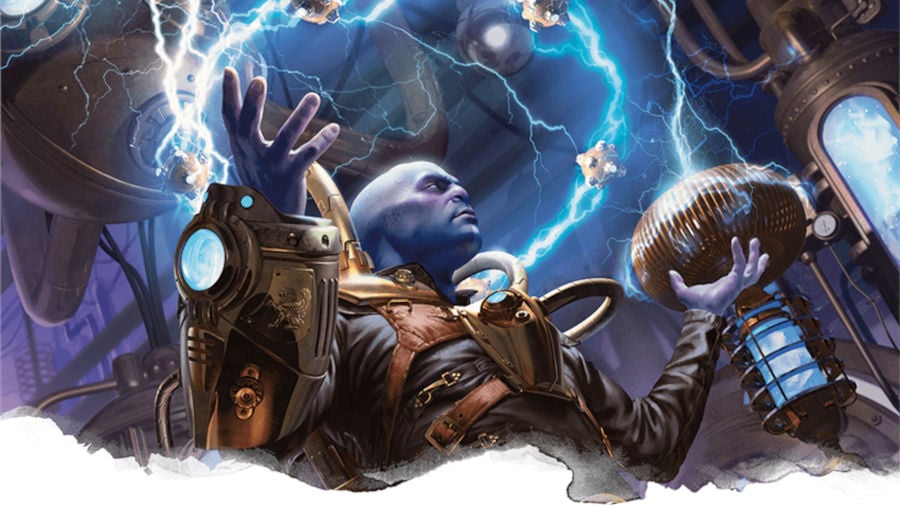
The DnD Artillerist is here to give you a big gun with which to hide your inadequacies. They gain an arcane firearm that boosts the damage output of all of their spells by a d8, though only on one damage roll.
It also adds an array of attack spells to use it with, including classics such as Fireball 5e. The extra spells also include the Shield, which can apply a +5 AC after you've seen what the enemy has rolled to hit you.
The most serious addition to your firepower is the Eldritch Cannon. This thing has its own AC, HP, and attacks. Plus, it takes the place of your bonus action when used. There's a choice to be made in whether it's handheld or occupies its own space.
You can choose from three forms of Eldritch Cannon and can switch between them each time it's summoned:
At ninth level, the cannon deals extra damage, and you can detonate it to send some hot shrapnel over to the enemy. Fortified Position is one of the most powerful fifteenth-level abilities that Artificers get, allowing you to summon two cannons at a time and activate them both for the same bonus action.
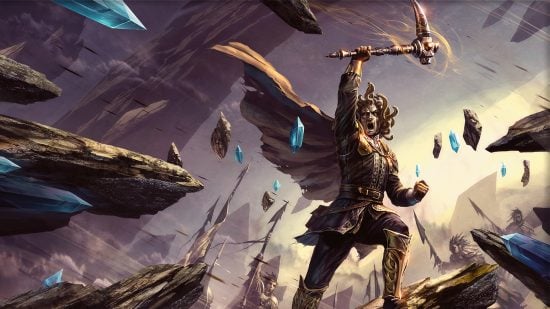
The Armorer 5e subclass has a lot to offer, starting with heavy armor proficiency. Combined with the option to infuse your armor and shields with magical buffs, you can have an AC above 20 by second level, remaining the party's toughest member for most of the campaign.
Extra Attack cements this as a fighting subclass. You're still stuck with simple weapon proficiency, but that doesn't matter because your armor now has built-in magical weapons that you're automatically proficient with.
The spells aren't wonderful, but Shatter is a welcome addition to the Artificer spell list, which is short on direct damage spells. While you'll never be the greatest caster, Shatter is a useful option for the Spell-storing Item, allowing any hireling or familiar to deal significant damage.
The real strength of the class comes through your armor. At third level, you can choose between Guardian and Infiltrator Armor, which provide different strengths:
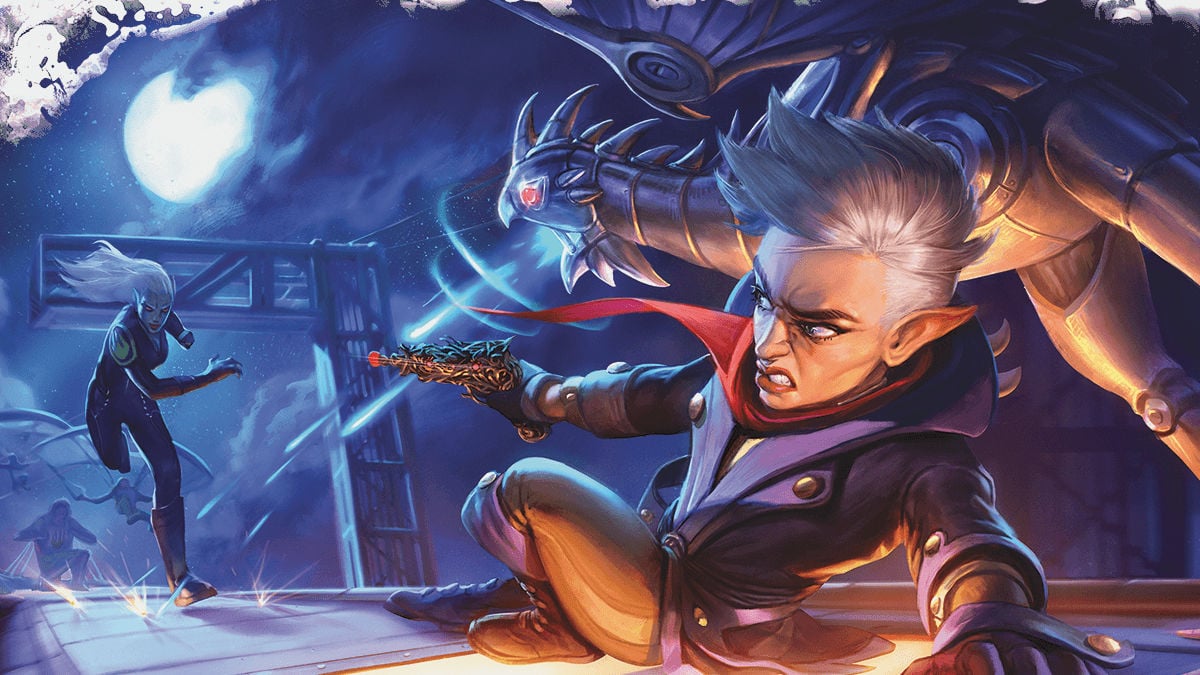
The Battle Smith Artificer is here for a fight, and its spell list reflects that. It gains a number of Paladin 5e spells that are potent for their level.
Battle Ready gives you martial weapon proficiency and allows you to use INT to attack and deal damage. Extra Attack lets you bring the pain, and Arcane Jolt lets you deliver an extra 2d6 damage (or heal a nearby ally for the same amount). Taken together, these form the core of a fighting character that's able to hold their own.
But the Battle Smith isn't just about bruising; it also builds a golem to do the same.
Your Steel Defender is a creature with its own stat block that functions like a DnD Ranger's Animal Companion. It will move and dodge on its own, but you must use your bonus action if it's to attack. It can still take an attack of opportunity, though, and it also has a special reaction allowing it to impose disadvantage on attacks against nearby allies.
Ultimately, this subclass makes you akin to a Beastmaster Ranger with slightly more spells, a noticeably better companion, many more magic items, and the certainty that you'd be dead within a week if you had to survive in the wild.
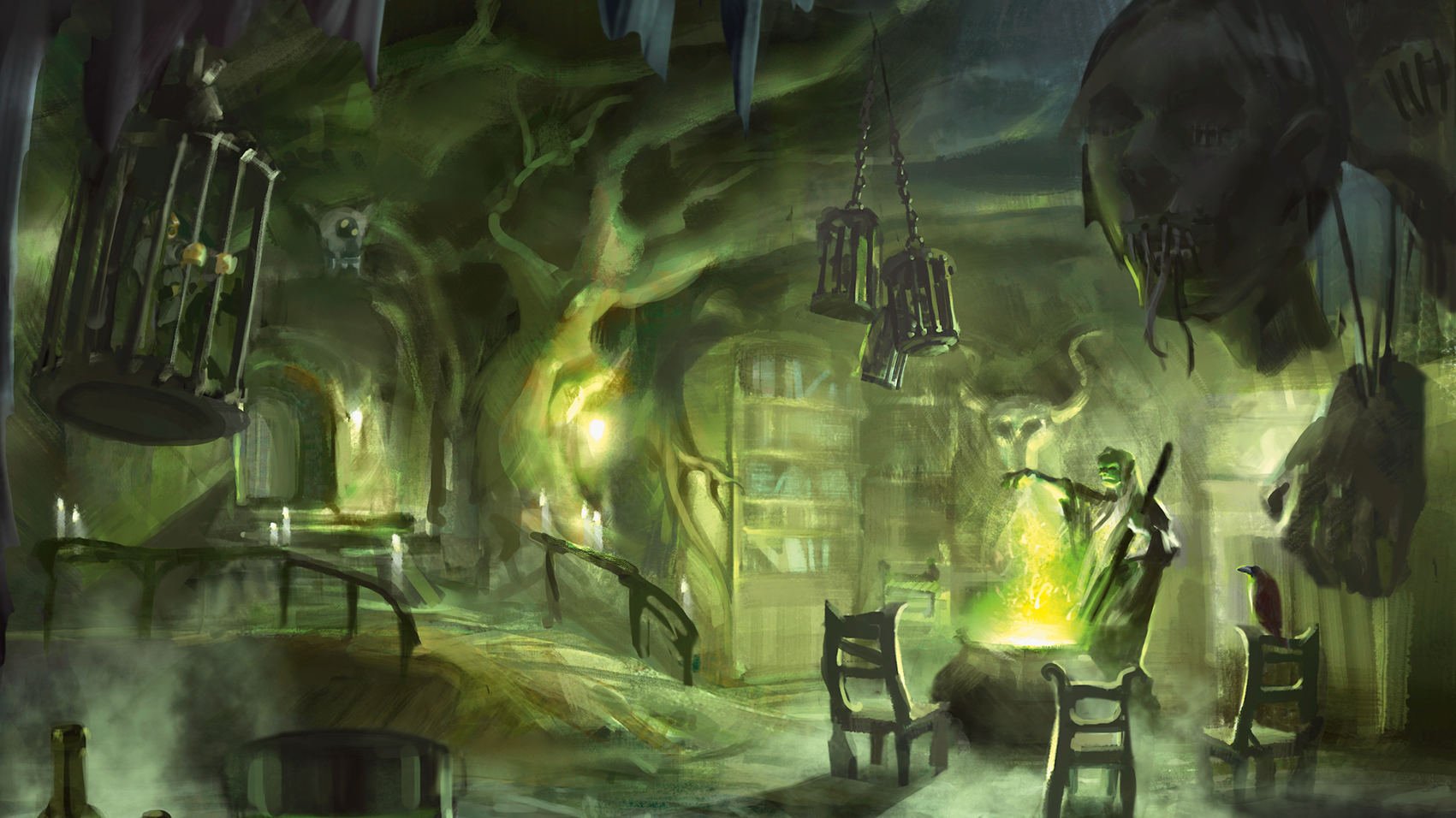
Level: Four, Eight, 12, 16, 19
At these levels, you can choose one of the following:
Our advice: Depending on your build, you'll be focusing on buffing your Intelligence first, followed by Dexterity or Strength (depending on your build). That leaves plenty of room for you to play with feats. Fey Touched and War Caster are our favorites - spellcasting might not be your main gimmick, but these will help your magical powers feel more consistent and useful.
Level: Six
Tool Expertise simply means that, when you make an ability check with a tool, your proficiency bonus is doubled for that roll.
Our advice: Crafting and picking locks are pretty much the only time you'll get use out of this feature - unless you get very creative with your roleplay.
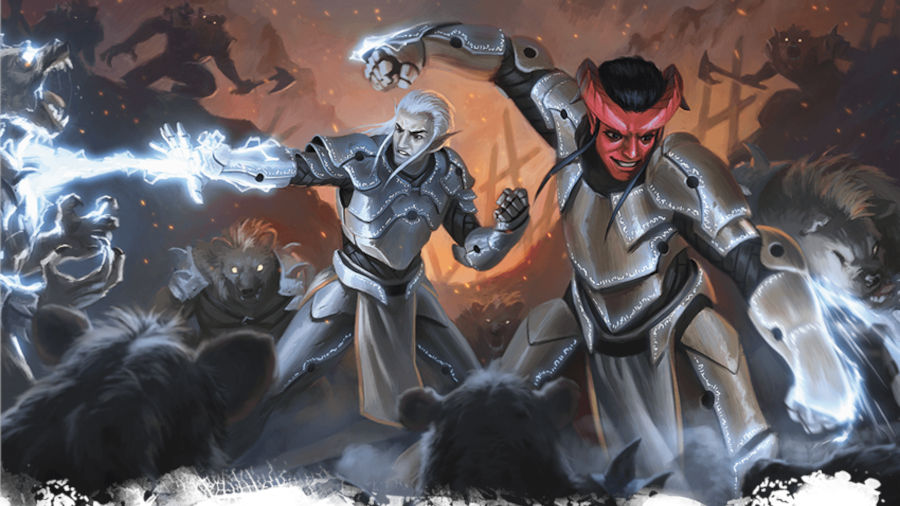
Level: Seven
Flash of Genius 5e lets you use your reaction to add your INT modifier to someone's saving throw if they're near enough to hear your words of wisdom (within 30 feet, that is). This can be done a number of times equal to your INT modifier before you need a long rest to replenish your uses.
Our advice: This is a handy little bonus that can be used to overcome 'save or have no fun' situations, if your GM is using paralysis and other abilities that prevent one player from participating in the game for the next half hour (Shame! Shame!). It can also be a fun one to roleplay by shouting what advice you're actually giving, or explaining how you intervene to avoid the danger.
Level: 10, 14, 18
Magic Item Adept/Savant/Master are a chain of abilities that increase the number of magic items you can attune to.
Magic Item Adept 5e lets you attune to up to four magic items at the same time, and you craft these items in a quarter of the usual time if they're common or uncommon in rarity. Plus, you spend half the normal amount of gold to make them.
Your attunement slots increase to five with Magic Item Savant 5e, and you can ignore class, race, spell, and level requirements for magic items. Lastly, Magic Item Master 5e lets you attune to up to six magic items simultaneously.
Our advice: These features simply make the Artificer better at their core class power: making and using magic items. Basically, your infusions ability never becomes redundant as a result of filling everyone's DnD attunement slots.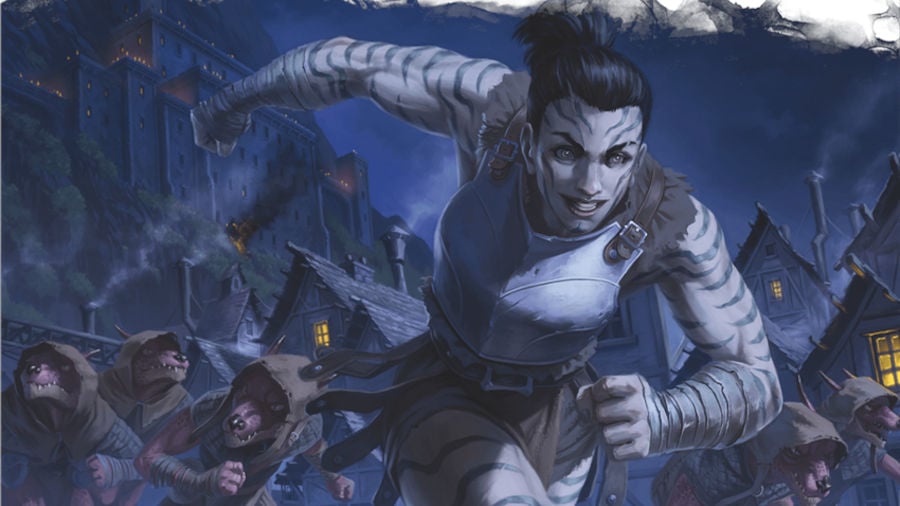
Level: 11
Spell-Storing Item 5e is slightly unhelpfully named. It doesn't create an item that works like a Ring of Spell Storing but lets you select an Artificer spell (which your character need not know or have prepared) and create an item that can cast that spell a number of times equal to twice your INT modifier.
Our advice: This has approximately a million uses: healing battery; letting a non-caster maintain a concentration buff; letting a familiar kick out attacks; granting the party Rogue 5e ten invisibilities a day; letting the whole party use Alter Self to make them disguised as the enemy - the list is endless.
There's an odd rules interaction, though, in that casting a spell as a bonus action prevents you from casting a spell as your main action. But you're not prevented from activating an item (which just so happens to cast a spell) as your main action. Expect some side-eye if you try this, though.
Level: 20
Soul of Artifice 5e is your top-end power, letting you add the number of items you are attuned to (probably six thanks to Magic Item Master) to all saving throws. It also lets you avoid dropping to zero HP by de-enchanting one of your infused items.
Our advice: Usually, stopping enemy effects appears dull in comparison to taking actions yourself, but if you're the last character standing in a tough situation, being able to take six hits of any size might make you the hero of the party.
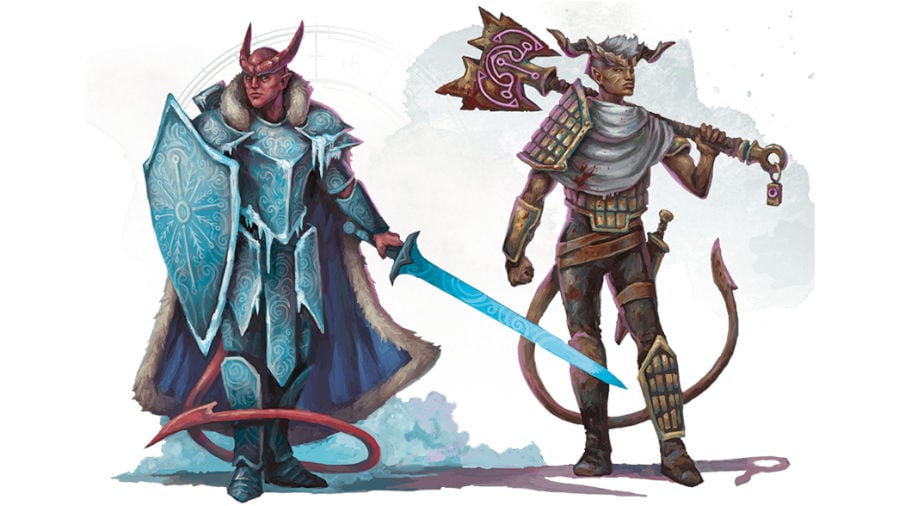
Any of the 5e DnD races (or species) can roll up their sleeves to learn the joys of craftwork, especially thanks to the Custom Origin rules in Tasha's Cauldron of Everything. However, some pair better with the Artificer class than others. We've picked out some of the best.
Found in: Player's Handbook
The best race for an Artificer is Variant DnD Human. Taking a feat at level one, they start out stronger than most races and can replicate the proficiencies of half of them. Plus, Variant Humans have only become more versatile as more 5e feats have been released in additional DnD books. The extra DnD skill and tool proficiencies are just cherries on the cake.

Kobolds are considered a member of the Fantastical races, which means you can put your ability score improvements in whichever box suits you. We'd recommend boosting Intelligence and Dexterity.
Not only will these benefit your Artificer; they'll also take advantage of the Kobold's extra proficiencies - you have the option to pick up proficiency in Arcana, Investigation, or Sleight of Hand thanks to Kobold Legacy. The Kobold can also gain proficiency in Medicine or Survival, but Wisdom is less of a concern for the Artificer.
The Kobold 5e race offers a few spellcasting options, and their Draconic Cry gives you advantage on attack rolls against enemies at close range, so your Artificer has some solid combat options.
There's also a lot of fun to be had in roleplaying a Kobold Artificer. There are only so many ways to say 'My fine Elven runes glow, and the item works exactly as intended', but plenty more ways to describe Kobold-y scrapheap concoctions. Don't forget that since your spells are delivered via tools, all of your healing can be described as horrific bodge jobs and experimental surgeries.

Rock Gnomes' +2 INT makes them a conventional choice for an Artificer character. It provides a boost to the Artificer's primary casting stat, as well as a bonus to the attack roles of some subclasses. The Rock Gnome 5e's additional tool proficiency opens up a host of options, discussed in the tools section above.
They also get the opportunity to have a few gadgets, which aren't up to much in a strictly utilitarian sense, but let you feel more like an Artificer by having a gizmo for everything. You might find a way to solve problems with them, or just hand a firestarter to your homunculus to give it a more interesting action at some opportune moment.
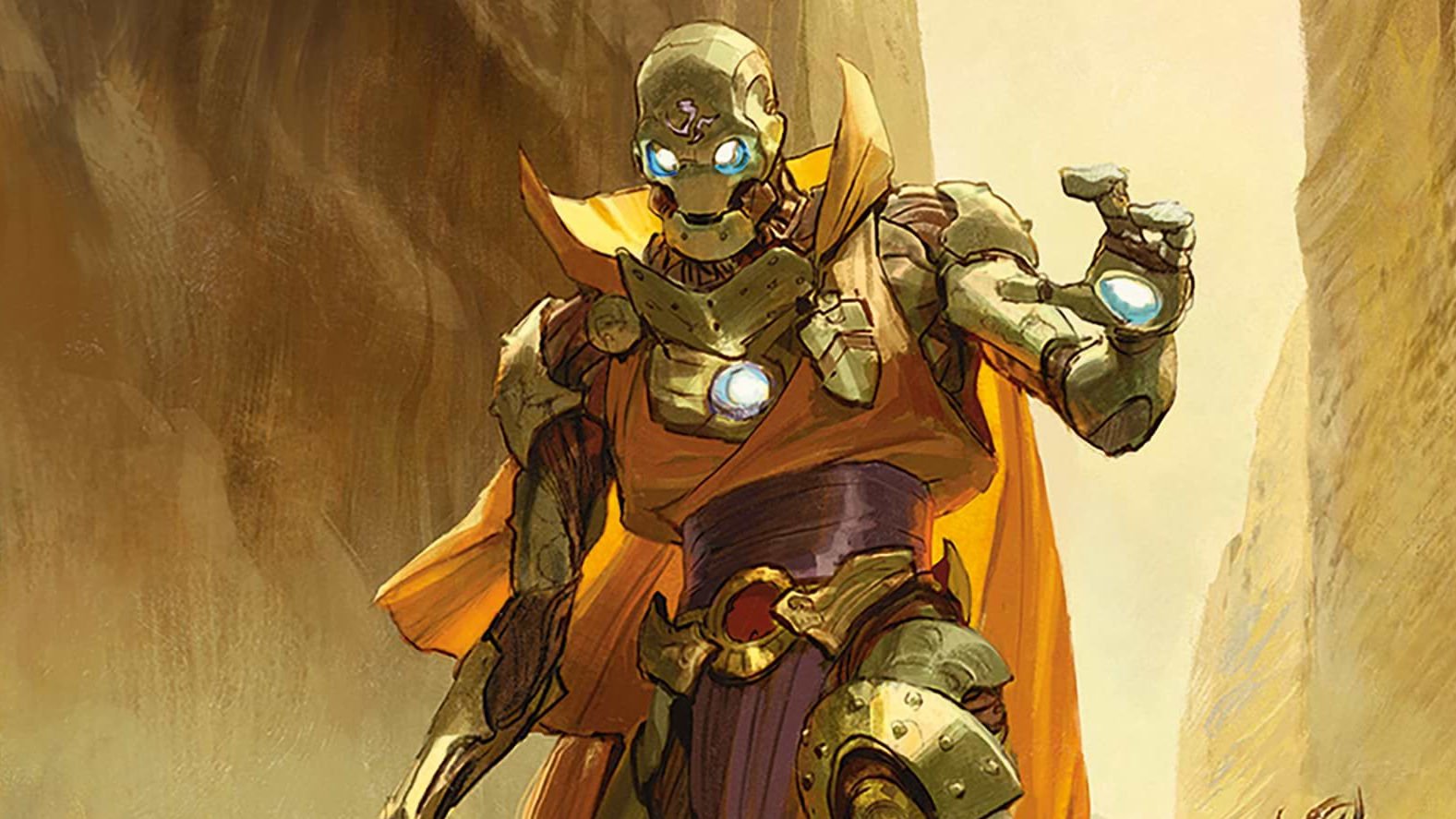
The Warforged 5e race suffers a bit from only having a +1 to INT with their big +2 going to CON, but some of the Artificer subclasses offer a tanky base that the Warforged can capitalize on. Their extra HP is backed up by a large AC and a few handy immunities. You even have a free tool proficiency, which pairs nicely with the Artificer's bonus.
The real reason to pick a Warforged Artificer is for the story options, though. The creation of Warforged has an important place in DnD setting Eberron's history, and the difficulty (and illegality) of constructing them is a big part of the setting. Since Warforged integrate any armor they wear into their bodies, and Artificers can infuse armor with extra abilities, a Warforged who's big into self-modification has plenty of opportunities for engaging descriptions and a variety of interesting story hooks.
Another race that's thematically connected to artifice, the MTG Vedalken race offers an INT bonus to boost all of your most important skills. Where they really shine is in their tool proficiency- the Artificer class doubles your proficiency, and Vedalken adds another d4 on top, letting you hit skill check results that most characters can only dream of.
The best place to make use of this depends a lot on your DnD campaign. In conventional dungeon-crawling campaigns, thieves' tools are likely the way to go, as easily picking locks and disarming traps will do a lot of good. Other campaigns may favor different approaches; access to ship might be just the thing you need in a naval adventure.
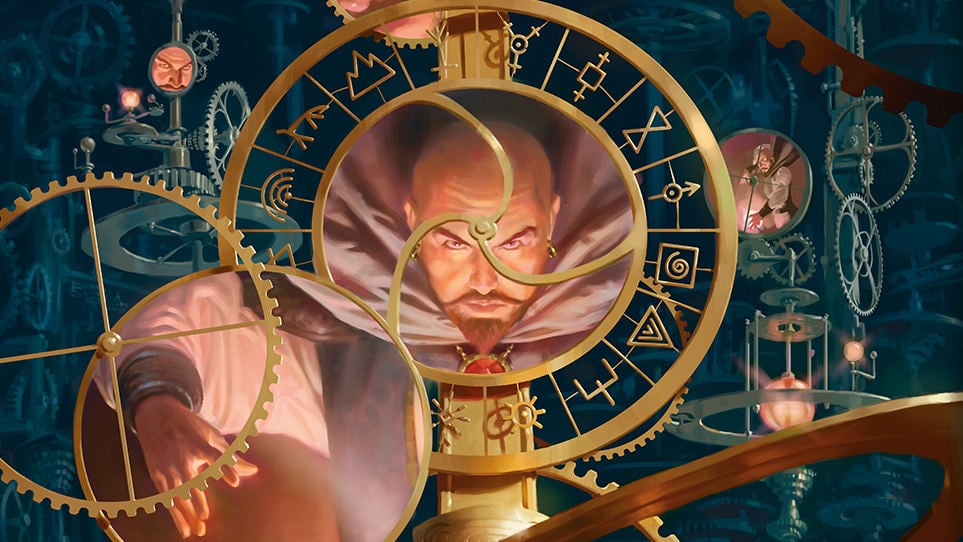
The list is somewhat limited, as they're only secondary casters. But there are still a few options that can go a long way. Here's a pick of the best to give you a taste of what an Artificer can achieve:
Level: Cantrip
If you're going to be building things it pays to be able to fix them, for free, forever. This gets a special shout out for Battle Smiths who can use it to heal their steel defender to full HP after every encounter.
Level: Cantrip
A situational choice, but a potentially powerful one, this cantrip enhances a weapon attack with thunder damage and some additional damage if the target voluntarily moves. Both packets of damage gain an extra d8 every five levels, so it can become a real powerhouse. With the Repulsion Shield infusion or the Artillerist's cannon, you can reliably push enemies out of contact, forcing them to choose between absorbing the extra damage or wasting their turn.
Level: One
Artificers sound very arcane so it's easy to forget that they can be competent healers at low levels. Don't forget that your spells are all cast using tools, letting you give medical descriptions of the spell to breathe a little more life into a post-battle mop-up.

Level: One
An odd spell that uses your reaction to take half damage from an elemental attack, before adding a little elemental damage to the next attack you dish out. It's potent because the reaction is the part of the turn you're most likely not going to use, so it always feels like getting something for nothing.
Level: Two
This can be used to gain advantage with a tool. It can also be used to gain Advantage on grapple or other combat checks if you're building a STR-based Artificer, or want to help the party DnD Barbarian swing one enemy into another.
Level: Two
You may think of Heat Metal as that spell that hurts someone via an object they're holding, but it can be more than that. As a Battle Smith Artificer, you can order your Steel Defender to grapple an enemy before making it a very uncomfortable embrace!
Level: Three
Once someone in the party can raise dead the only way for your party to lose is for everyone to go down. You're an excellent candidate to be the one that doesn't go down, given the Artificer's combined medium armor, shields, access to the Shield spell (for some subclasses), and dependency on few enough stats to be able to afford some CON. Just make sure that the rest of the group pays for their diamonds in advance.

Level: Four
By the time Artificers get fourth-level spells, most enemies are sufficiently powerful that they'll laugh off conventional attack spells. Resilient Sphere, however, isn't about harming enemies but removing them from the fight on a failed saving throw.
Unlike most effects of this nature, it permits only one save rather than a save every round. You can't damage the enemy while they're in it, so it's not much use against a single opponent, but it is great for isolating a boss while you take out their minions.
Level: Five
The option to build things out of pseudo-material you've pulled from the Plane of Shadow is a must-have for any Artificer. This is also a spell that can be powerful if your DM is generous (a 1,500 GP dose of Midnight Tears poison is technically non-living vegetable, so you should be able to create it). Since Artificers don't get their fifth-level spell slot until 17th level, the full casters in your party will be throwing around Wish 5e by the time you get this spell, so don't feel bad about pushing it to its limits.

Playing an Artificer involves considering a truly staggering amount of information, so hopefully we can solidify your understanding of the class by suggesting a few builds. These aim to combine mechanical advantages with a few roleplaying hooks, forming characters that are both powerful and fun to play.
A Kobold who dreams of being a DnD dragon rider and builds their own dragon has a lot of roleplaying hooks. There are a thousand ways to describe the bizarre and unlikely contraptions they use to bring their dreams to life. Mechanically it's pretty powerful, since a Kobold riding its Steel Defender will often have advantage using their Pack Tactics race trait in combination with their mount.
Basic build
Start by creating a Kobold Battle Smith with the following stats:
As for spells, pick anything that makes your dragon more 'dragon'. Levitate and Fly 5e can get it airborne, while Fireball can give it a breath weapon.
| Level | Abilities |
| 4 | Piecer feat, or +1 DEX |
| 8 | +2 DEX |
| 11 | Warding Bond spell for your steel Defender |
| 12 | Sentinel feat |
| 16 | Mounted Combatant feat |
| 19 | Lucky feat |
For your infusions, mechanically enchanting any weapons and armor you can get is probably the way to go. You might also consider Pipes of Haunting to give your dragon the fear aura it so richly deserves. Once you hit tenth level, you can use the Headband of Intellect to kick your INT up to 19 if you fancy taking a break from weapon attacks from time to time.
Initially, you are a fairly solid finesse fighter, making attacks with a decent bonus. At third level, you gain a 'dragon' to ride, which has the same stats as any other Steel Defender but is also an excuse to make dragon noises. By the time you hit fifth level, you have a second attack each round and a third using a bonus action for the defender, as well as a guaranteed magic weapon of your preferred type and a useful feat to boost the damage of your attack.
In later levels, you become something of a nightmare to attack. If something attacks you, it needs to contend with your high AC, which is produced by your high DEX as well as the ability to infuse both your armor and shield with magical bonuses.
Your mount can use its reaction to impose disadvantage on any melee attack directed at you. With Warding Bond, it can increase your AC further while absorbing half your damage. You can also use a reaction to cast Shield for another +5 AC if something looks like it'll penetrate your defenses.
Of course, the enemy might decide to attack your dragon instead. In this case, you get a free attack against them using the Sentinel feat and force them to attack you instead with Mounted Combatant, leaving them in the same situation but with a bloodier nose.
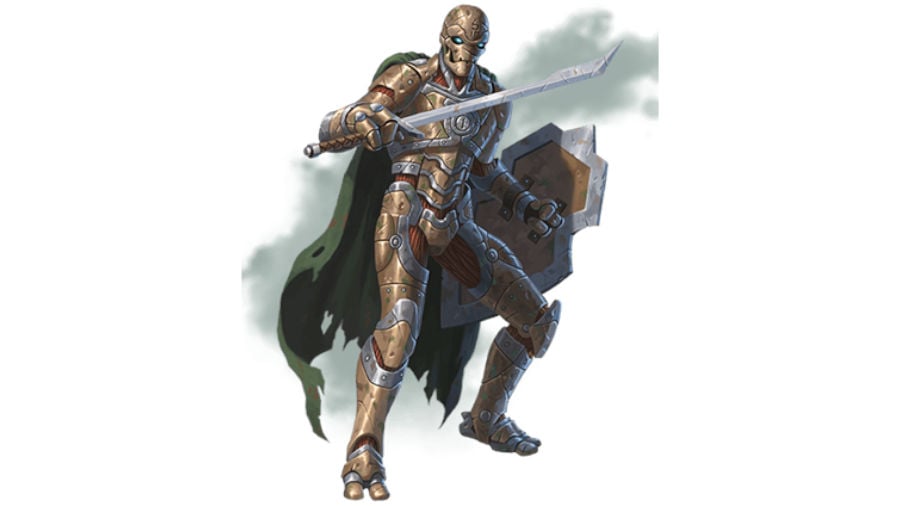
| Level | Abilities |
| 4 | Piecer feat, or +1 DEX |
| 8 | +2 DEX |
| 11 | Warding Bond spell for your steel Defender |
| 12 | Sentinel feat |
| 16 | Mounted Combatant feat |
| 19 | Lucky feat |
Armorer is a fun archetype that opens the door to a whole pile of extra infusions. Playing as a Warforged, meanwhile, lets you integrate your armor with yourself. This is the path to the maximum number of infusions, which are unlikely to be disarmed even under extreme circumstances.
Basic Build
Obviously, you're a Warforged (of the Armorer subclass). Use these starting ability scores:
Focus on picking up spells to cast before or after combat, such as Cure Wounds and Mirror Image.
| Level | Abilities |
| 4 | +2 INT |
| 8 | +2 INT |
| 11 | Spell-store Shatter and give it to your homunculus |
| 12 | Fighting Initiate feat |
| 16 | Mage Slayer feat |
| 19 | Savage Attacker feat |
The Homunculus Servant Infusion gives you a use for your bonus action, which this archetype otherwise lacks. After that, it's all about making your special armor as cool as possible, so start infusion Armour of Magical Strength, Enhanced Defense, Radiant Weapon, Winged Boots, and so on. The best options change depending on your level and whether you have the class feature allowing the armor to be enchanted multiple times.
If you're starting from first level, the first two levels will be a challenge. Until you can add INT to attacks, you're going to have a hard time. Once you get there, however, the ability to wear heavy armor negates your low DEX, and using INT for your Thunder Gauntlets makes your STR irrelevant.
From there on out, every level is about modifying your body. Start off jumping high, and end up flying. Start off with a magic punch, and end up with an exploding magic punch.
The feat selection here is somewhat arbitrary. The subclass locks you into specific weapons (the Thunder Gauntlets or the Lightning Cannon), but outside of that, you're free to develop in any way you see fit. Since you only need one stat, you have three choices of feat allowing you to pick all of those really interesting combat-oriented feats that are hard to squeeze into other builds.
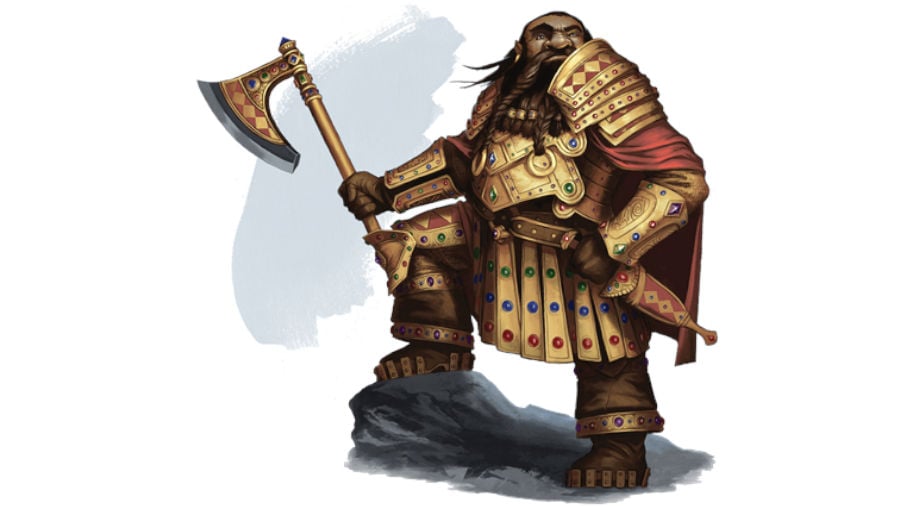
This is a supportive build for players that don't like to make combat all about themselves; an Artificer that makes the rest of their party practically invincible and hands out their infusions rather than keeping each one for themselves. It's also something that might interest a tactician at the higher levels as the placement and movement of your twin turrets provides some intriguing dynamics.
Basic build
Your Artillerist should be a Mark of Warding DnD Dwarf with these starting stats;
You have two potent defensive spell options in Shield (which can be cast as a reaction when needed) and Armor of Agayths (which has a built-in counterattack, and scales extremely well if using a slot above first level). Your basic action will likely be a cantrip, such as Fire Bolt or Thunderclap. Starting at fifth level, you add one d8 to a single damage roll, letting you get more value out of area-of-effect spells, such as Thunderwave and Fireball.
| Level | Abilities |
| 4 | +2 INT |
| 8 | +2 INT |
| 11 | Spell-store Invisibility and give to your party's Rogue |
| 12 | +2 CON |
| 16 | Dwarven Fortitude feat |
| 19 | Toughness feat |
You'll be handing out your infusions to other party members, so the best choices depend on their classes and builds. Early on, Enhanced Defense and Enhanced Weapon are welcome everywhere. Later in the game, when your party has found magic items to add to their key actions, you can provide more exotic action options, such as Pipes of the Sewers or the Ring of the Ram.
We couldn't get to the end of an article on Artificers without including at least one Dwarf! This build excels at constructing defenses, being able to summon a turret, and also being excellent at creating mundane traps with thieves' tools. While the shooting turrets are powerful, the defensive option plays into our theme by providing all allies within a radius with a small pile of temporary HP each round, keeping the fight going for longer.
Since a lot of your contributions will come from slinging boosted cantrips while your turret keeps the party alive, and you have a lot of HP and decent AC to keep you going, you don't need that many items. This frees up your infusions to hand out to the rest of the party if you prefer to shine the spotlight on others (or perhaps if you're an experienced player in a new group).
It can be helpful to write the infusion items on cue cards so you can pass them around easily, rather than writing them on character sheets and forcing people to make changes if you decide to hand out a different combination of items after the next long rest.

Deciding how your Artificer builds things is the key to making their abilities sound interesting. While an Alchemist, Artillerist, Armorer, and Battle Smith can all cast Cure Wounds, they may do so very differently.
The Alchemist may prepare a potion, the Artillerist might have a second nozzle on their turret spraying a healing fog, the Armorer may be able to set their lightning gun to 'cauterize', while a Battle Smith might make a crude sling and tell you to stop whining. The combination of your character's race, subclass, and attitude can inform the description of your abilities.
Remember to keep descriptions short. Plenty of players enjoy the game being more than "I cast the same spell you've seen before and roll dice", but they still want to get around to their turn in a reasonable amount of time. A couple of words of cool flavor add much more than a long-winded speech.
Of course, a character is more than your abilities. You can round out an Artificer by thinking a little more about how they learned their craft and what they hope to gain from it.
Were they taught by someone from another tradition that's left a mark on what they do? Are they learning alchemy because they want to become a techno-Lich? Did they see something terrible happen with wild magic and are trying to make conventional magic redundant?
Having a few strong attitudes gives you something to work with when you're chatting with other characters or bouncing off NPCs. It's hard for your DM to interact with all players all the time, so cut them a break once in a while by saying something controversial to another PC if they need to run a scene that you're not in. Who knows, maybe they'll agree to let you saw off their arm and replace it with superior metal after all.

While the Artificer is a long-established part of D&D, the class hasn't been upgraded in many a year. It's the last of the core classes to receive an update in line with the 2024 Player's Handbook changes, but Wizards of the Coast is actively working on this.
What we know about the next version of the Artificer currently comes from playtest content. The first playtest changes were proposed in December 2024, and the biggest change turned the Artificer's iconic infusions into a 'replicate magic items' mechanic. This did what it says on the tin, allowing Artificers to craft magic items they knew the plans for.
This version of the Artificer got far fewer infusions/plans to compensate for the mechanic's increased flexibility. This seemed like a downgrade, but YouTuber Treantmonk quickly found a broken build hidden in the fine print.
In February 2025, a fresh playtest tweaked this existing revision. It also added a brand-new Cartographer subclass whose main schtick was being able to teleport a lot. Seriously, most of their abilities focused on teleporting.
Then, in May, we were treated to a second Artificer subclass, the Reanimator. This Artificer gets a spooky reanimated companion that's kept alive by a mix of necromancy and lightning. We adore the flavor, but we feel the Reanimator needs a jolt of power to really thrive.
We'll soon see what the final Artificer revision looks like, as Eberron: Forge of the Artificer is due to be released on August 19. Watch this space for more updates on the new content.
Want to keep up-to-date with all things D&D? Here's the full DnD release schedule. We can also recommend plenty of accessories to enhance your game - here are the best DnD miniatures for in-person games and virtual tabletops for digital ones.










:max_bytes(150000):strip_icc()/ccm-youtube-roundup-friday-75728b17cffe40f2b98b4376682661a3.jpg)
:max_bytes(150000):strip_icc()/062725-shoes-to-wear-linen-skirt-soc-5a5254e7492f4d40bfe15b3479d5a458.jpg)